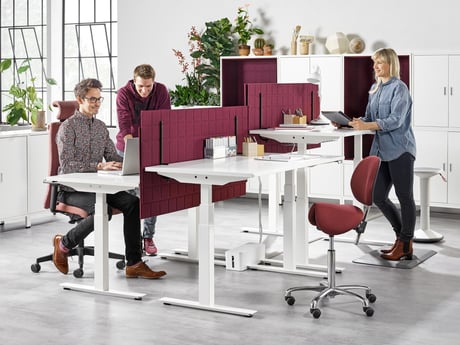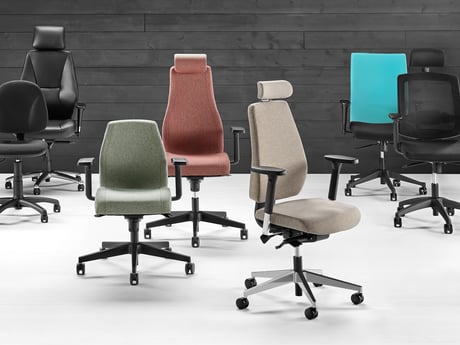How can we social distance in the workplace?

As businesses consider how and when they will get back to work, social distancing is the topic on everyone’s minds. Last week, we looked at how warehouses and shops can enforce social distancing. Now we turn our attention to safe working practices in the office. Although it may still be a while until businesses can expect the majority of employees to return to the office, the steps you take now could help get your workplace ready for the inevitable changes to come. We take a look at some changes that can be made to the office layout to keep employees safe.
Desks
Hot desking policies should be the first thing to change. Allocated workspaces mean that only one person is touching each desk and that equipment is not shared between users. Sitting at the same desk every day also narrows the circle of people with whom each employee comes in prolonged contact. If nearby desks are always occupied by the same colleagues, this will reduce the number of other people to whom each employee is exposed. Use of social spaces and co-working areas should be discouraged.
Where possible, individual desks rather than bench desk systems will allow you to physically separate workspaces to allow for a two-metre space between each one. With bench desks, try to leave an empty workspace between occupied desks, placing staff in a zigzag pattern, so that co-workers are not face-to-face or directly next to each other. One way to do this would be by staggering days that employees come into the office and encouraging some employees to continue home working.
Screens
Use screens to create a physical barrier between workstations. Perspex screens between work areas will be the most effective way to protect employees. Where social distancing is not possible, these screens are likely be essential before the business can get back to work. Where the two-metre rule can be observed, desk screens can provide an additional level of protection by further separating workspaces. Floor screens can be used to create temporary walls within open plan offices to limit contact between departments and line walkways so that thoroughfares are separated from work areas.
Signs
Social distancing markers will be an essential way to encourage safe practices on return to the workplace. Floor signs and warning tape indicating a safe 2 m distance ensure employees know how far apart they need to be. Other safety signs and information to remind people to wash their hands at regular intervals, clarify new guidelines and educate the workforce on the signs of the Coronavirus should be displayed in various locations throughout the office.
Changes to the physical workspace along with changes in behaviour will make a significant difference in the months to come. Other practices, such as continuing with online meetings instead of gathering in the conference room, staggering working hours and break times, minimising shared equipment and providing handwashing facilities or sanitiser at entry points and throughout the building, are also likely to be recommended.
AJ Products intends the above as general advice and recommends always following the latest government guidelines.



